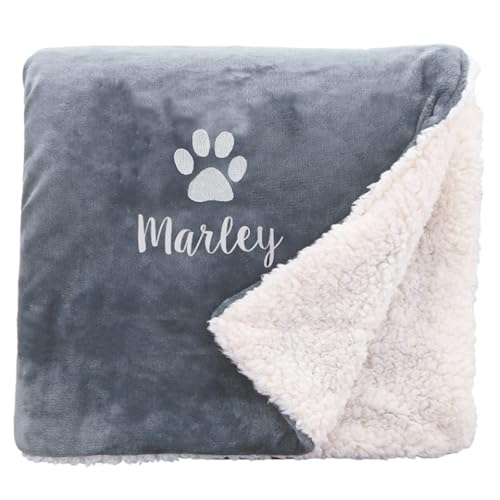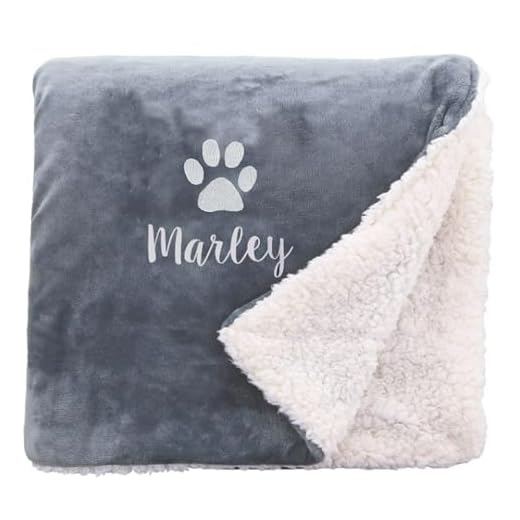




Providing a snug hideaway can lead to a sense of security and warmth for your furry companion. Many animals find solace beneath layers of fabric; it’s a natural instinct rooted in their ancestry. In the wild, small canines often sought shelter in dens or foliage to escape predators and harsh weather. Recreating a similar environment at home satisfies this instinct, offering comfort and reassurance.
Observing my own canine companion, I noticed how much joy he experienced when curling up beneath the bedding. His tail would wag with enthusiasm, and he’d often burrow deeper, as if searching for the perfect spot. This behaviour isn’t merely playful; it’s a demonstration of trust. When a pet snuggles in close, they’re signalling their comfort with their surroundings and their bond with you.
Creating a designated space using blankets or a cozy bed can enhance this experience. Consider using soft materials and ensuring the area is quiet and safe. This not only encourages relaxation but also strengthens the emotional connection. Keep an eye on specific habits; some prefer to snuggle more during cold weather or after a stressful day. Recognising these patterns can help you provide a comforting atmosphere tailored to your pet’s needs.
Understanding the reasons behind this behaviour enhances the relationship you share. It’s a reminder that our companions seek not just physical warmth but emotional security as well. Tailoring your environment to cater to these instincts can lead to a happier, more relaxed pet.
Understanding Canine Instincts for Seeking Warmth
Providing a snug environment is key for our furry companions. Many breeds possess a natural affinity for warmth, a trait rooted in their ancestral history. For instance, animals in the wild often sought shelter in dens or burrows to escape the cold, ensuring safety and heat. This instinct remains strong in many breeds today.
Keeping your companion warm can have positive effects on their mood and behaviour. If you notice your canine friend snuggling up in your blankets, consider offering them a designated warm space, such as a heated bed or a snug blanket. This not only satisfies their need for warmth but also creates a sense of security.
Temperature sensitivity varies among breeds. Smaller breeds and those with short fur can feel the chill more acutely than larger, thicker-coated types. Observing your pet’s comfort levels during colder months can guide you in providing the right environment. If they seek warmth, it might be time to invest in a cozy sweater or jacket when heading outdoors.
Emotional comfort is another aspect of this behaviour. A warm spot can serve as a retreat from stress or anxiety. If your furry friend is feeling uneasy, creating a safe haven with blankets might help alleviate their worries. Positioning this space in a quiet corner of the home can further enhance their sense of safety.
Always pay attention to your companion’s cues. If they frequently burrow or snuggle, it’s a sign they appreciate the warmth and security you provide. Encouraging this behaviour can strengthen your bond, making them feel more at home and loved.
The Comfort of Enclosed Spaces for Canines
Creating a snug environment is key for a happy companion. Enclosed spaces provide a sense of security and warmth that many furry friends crave. Here are some insights into why these places are cherished:
Natural Instincts at Play
- Canines have a natural tendency to seek out confined places. This behaviour stems from their ancestors, who found safety in dens.
- Being in a sheltered area helps reduce stress. It mimics the cozy feeling of a den, where they felt safe from predators.
- Many pets enjoy the darkness and seclusion that comes with snug spots. It allows them to relax completely.
Temperature Regulation
- Warmth is a significant factor. Enclosed spaces trap body heat, providing a comfortable temperature during colder months.
- When wrapped in blankets or nestled in a pile of laundry, they can maintain their body heat more effectively.
- Some companions may also seek out warmth during colder nights, finding comfort in tight spots.
Having a designated space, such as a blanket fort or a cozy bed, can enhance this instinct. Create a safe retreat for your buddy to enjoy the benefits of warmth and security. Remember, every pet is unique, so observe what your companion prefers. This understanding will lead to a more harmonious relationship, allowing your furry friend to thrive.
Anxiety and Its Impact on Behaviour
Recognising signs of unease in your pet is crucial for their well-being. Symptoms such as excessive barking, chewing, or hiding often indicate stress. For instance, a friend of mine noticed her Cavalier King Charles Spaniel would tremble and seek out small, enclosed spaces during thunderstorms. This behaviour highlighted the importance of creating a safe haven that could mitigate anxiety.
Creating a Calm Environment
Establishing a peaceful atmosphere can significantly reduce stress levels. Soft music, dim lighting, and familiar scents help create a sanctuary. When my pup was anxious during fireworks, I used a calming diffuser with lavender, which seemed to ease his restlessness. Additionally, providing a comfortable blanket or a designated quiet spot can encourage relaxation.
Nutrition’s Role in Behaviour
Proper nutrition plays a role in emotional health. Foods rich in omega-3 fatty acids, such as fish-based options, support brain function and can help alleviate anxiety. I found that switching to the best dog food for cavalier king charles spaniel puppy made a noticeable difference in my dog’s overall mood. Regular meals can also establish a routine, which is beneficial for reducing stress.
Creating a Safe Space for Your Canine Companion at Home
Establish a designated area in your home where your furry friend can retreat and feel secure. This spot should be quiet, away from the hustle and bustle of daily life, such as a corner of a room or a specific area in the living space.
Incorporate familiar items like their favourite blanket or a soft bed to enhance comfort. These objects carry scents that provide reassurance, making the environment more inviting. If possible, elevate the area slightly to create a den-like feel, which can be soothing.
Use barriers or furniture to create a semi-enclosed space. Dogs often seek out small, sheltered areas that mimic natural dens. A simple arrangement of cushions or a pet tent can be sufficient for this purpose.
Consider soundproofing the area with rugs or curtains to minimise sudden noises that could cause stress. Background noise can be distracting, so playing soft music or using a white noise machine can help mask unsettling sounds.
Ensure access to toys and chew items in this safe zone. Engaging toys can distract and entertain, providing mental stimulation that alleviates boredom, which can lead to anxiety.
Regularly check in on your companion when they are in their space, offering gentle reassurance without forcing interaction. This balance allows them to feel secure while knowing you are nearby if they need comfort.
By creating this sanctuary, you support their natural instincts for safety and comfort, enabling a happier and more relaxed atmosphere at home.
FAQ:
Why does my dog prefer to be under the covers?
Dogs often seek warmth and comfort, which being under the covers provides. This behaviour can be traced back to their wild ancestors who would burrow into dens for protection against the elements and predators. The covers create a snug environment that can make your dog feel safe and secure.
Is it normal for my dog to sleep under the covers every night?
Yes, it is quite normal for dogs to enjoy sleeping under the covers regularly. Many dogs find this behaviour comforting, and it can also enhance their sense of security. If your dog is consistently seeking this behaviour, it might indicate that they feel safe and relaxed in their environment.
Could my dog’s desire to be under the covers indicate anxiety?
While many dogs enjoy being under covers for comfort, it can also be a sign of anxiety in some cases. If your dog is seeking this space during loud noises, stressful situations, or changes in their environment, it might be a way for them to cope with their anxiety. Observing their behaviour in various situations can help you determine if it’s simply a preference or a sign of stress.
What should I do if my dog doesn’t want to come out from under the covers?
If your dog seems reluctant to come out from under the covers, it’s important to assess the situation. Make sure they are comfortable and not too hot, as overheating can be a concern. You can gently encourage them to come out by offering treats or engaging them with toys. However, if this behaviour seems excessive or is accompanied by signs of distress, it may be wise to consult a vet for further evaluation.








